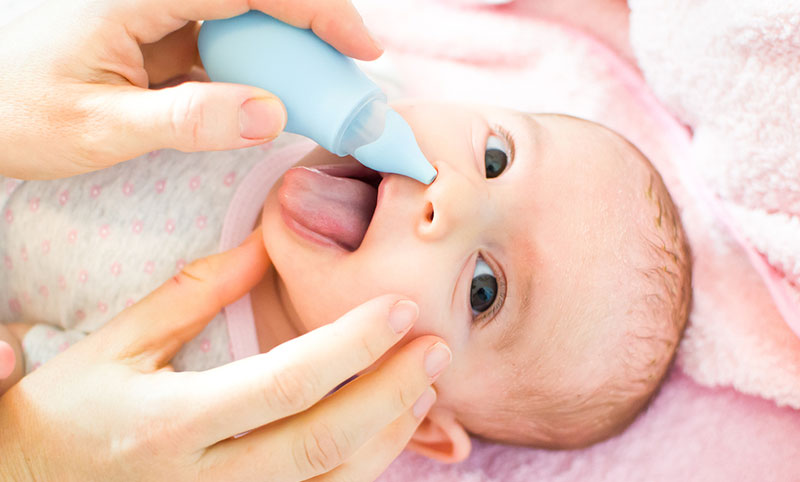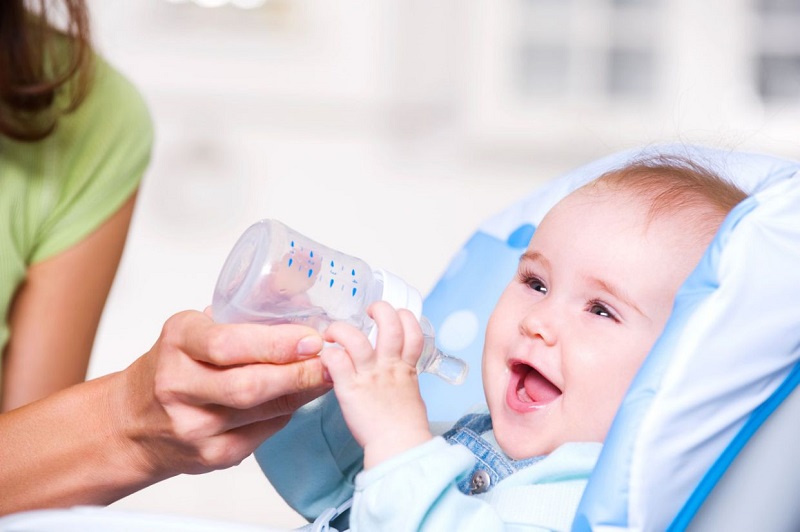Contents
A runny nose in a baby can actually be a good thing, believe it or not. It’s the body’s way of improving its mechanism for fighting germs and preventing them from causing any further problems. And since babies’ immune systems are just getting introduced to the various types of microbes around, a runny nose can be a common occurrence. Although it usually isn’t something to worry about, nasal congestion in babies can be frustrating both for the little ones and their parents.
Babies’ airways are still tiny and undeveloped, so being unable to inhale properly through the nose can cause a great deal of stress. As a result, a newborn with a stuffy nose will be frequently crying, having trouble sleeping and be in a bad mood. And this, in turn, can cause further stress on the parents who are just getting used to their new role. To make things easier for everyone, here are some effective, gentle and safe ways to relieve nasal congestion in babies.
Try a Nasal Aspirator

One of the easiest ways to provide immediate relief is to use a nasal aspirator. A nasal aspirator is a device that uses suction to pull out the excess mucus from the baby’s nose in a quick, clean and gentle way. A nasal aspirator can also be used in combination with a saline spray to help loosen up the blockage for easier removal. Simply squeeze a few drops of sterile saline solution in each nostril and wait a few minutes for the mucus to loosen up. Then place the tip of the nasal aspirator into the nostril and squeeze or press the button if it’s battery operated.
Once you do this, the nasal aspirator will draw some mucus out. Do so until you notice that there’s no mucus left, or at least until your baby is patient enough to let you continue with the cleaning. Use the nasal aspirator before you feed your baby and before bedtime. This will help the little one breathe more easily.
When it comes to choosing a nasal aspirator, make sure that it’s made from medical-grade silicone that’s safe to use. In addition, make sure that the aspirator features soft tips that won’t feel uncomfortable or hurt the baby’s delicate nostrils. After you’ve unblocked your baby’s nasal passages, give the aspirator a thorough cleaning by opening the mucus cup and rinsing it with hot soapy water.
Steam It Out

Unfortunately, although nasal aspirators are very effective and easy to use, they often don’t work with older babies. While newborns sit relatively still and allow you to use this device, babies which are 8 or more months old may get fussy. When this happens, you need to resort to other solutions to loosen up a blocked nose, like for instance steaming.
To do so, it’s recommended to use a vaporiser or humidifier that releases a safe, cool mist into the room. This mist helps lubricate the nasal passages, which allows for the blockage to drain out easily. Place the device close enough to your baby’s crib, so that it can work its magic while the little one sleeps. Change the water every day and clean the machine according to its instructions in order to prevent mould or bacteria growth.
In addition, warm showers are also helpful in providing relief. Before bedtime, give your baby a warm shower and let the bathroom get nice and steamy. This can help clear your baby’s nose and allow him/her to go to sleep easier.
Use a Pillow

The horizontal position can make the blockage worse as the child sleeps. To prevent this, you can try placing a thin pillow under the mattress topper so that your child’s head is positioned at an angle that makes it slightly higher than the feet. This can allow the mucus to drain out of the sinuses better. Do not place the pillow on top of the bed or within direct reach of the child to lower the risk of SIDS. Most pediatricians recommend placing the pillow under the topper during the first two years.
Hydration, Hydration!

Increasing the fluid intake is one of the best ways to help thin the mucus so that it drains out easily through the nose without causing blockage. Since milk is known to make phlegm thicker and more irritating than it normally is, it’s important to encourage your child to drink more water. What’s more, mashed and pureed fruit and vegetables are also great options if your child is old enough for them. But even if your child just sips some more water throughout the day, it’s enough to help.
Massages and Light Pats

Try to gently run the baby’s nose, eyebrows, cheekbones, hairline and bottom of the head. This can feel soothing and improve the drainage of the mucus from the sinuses. Light pats on the back can help babies if the phlegm gets stuck in their throats and lower airways. Lay the baby across your knees and gently pat the back with your cupped hand. This can help loosen mucus in the chest and make it easier for the baby to cough it up.



